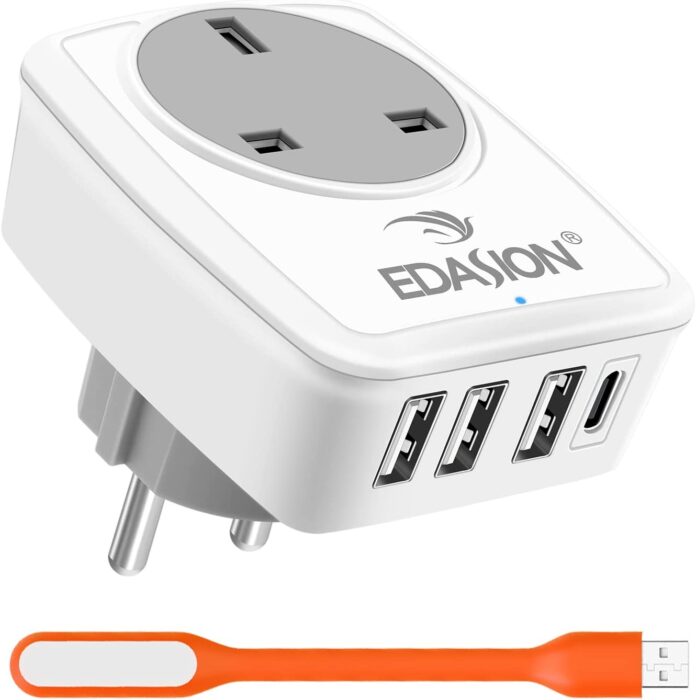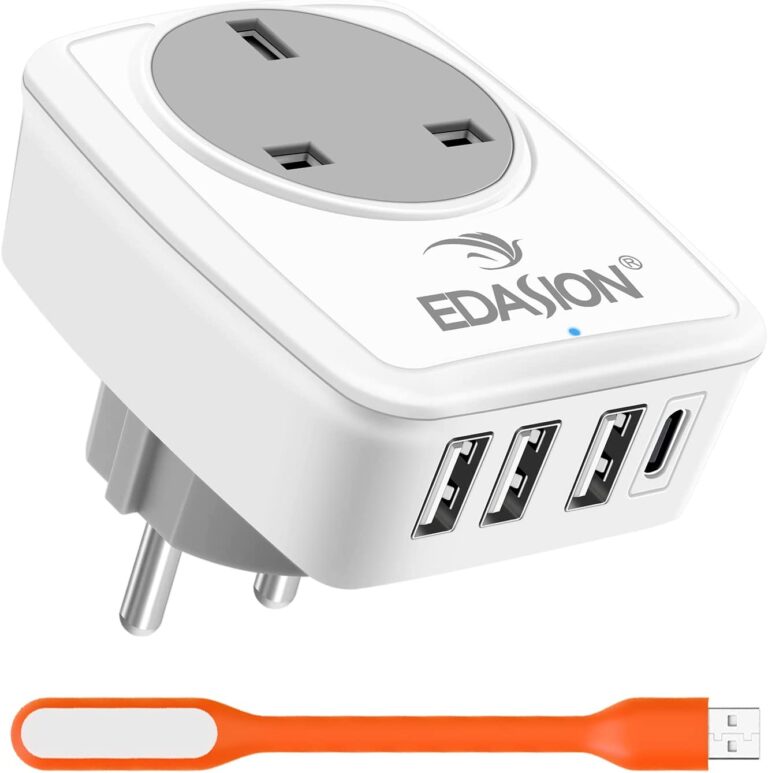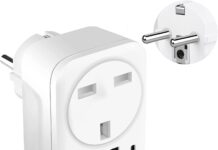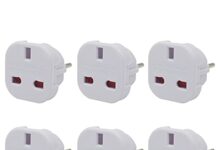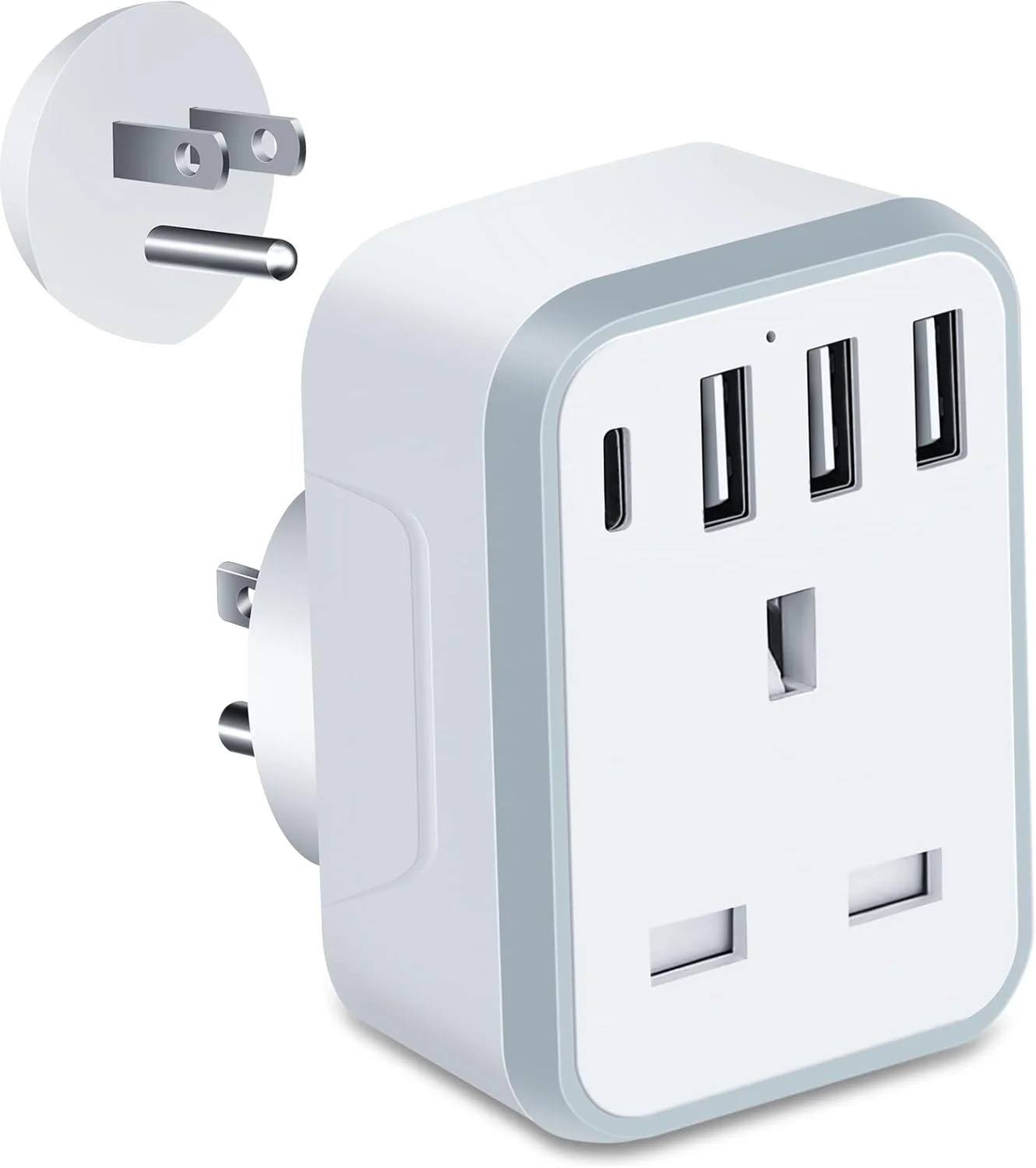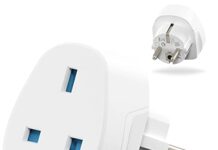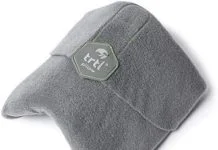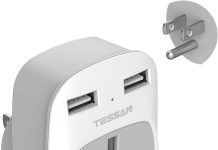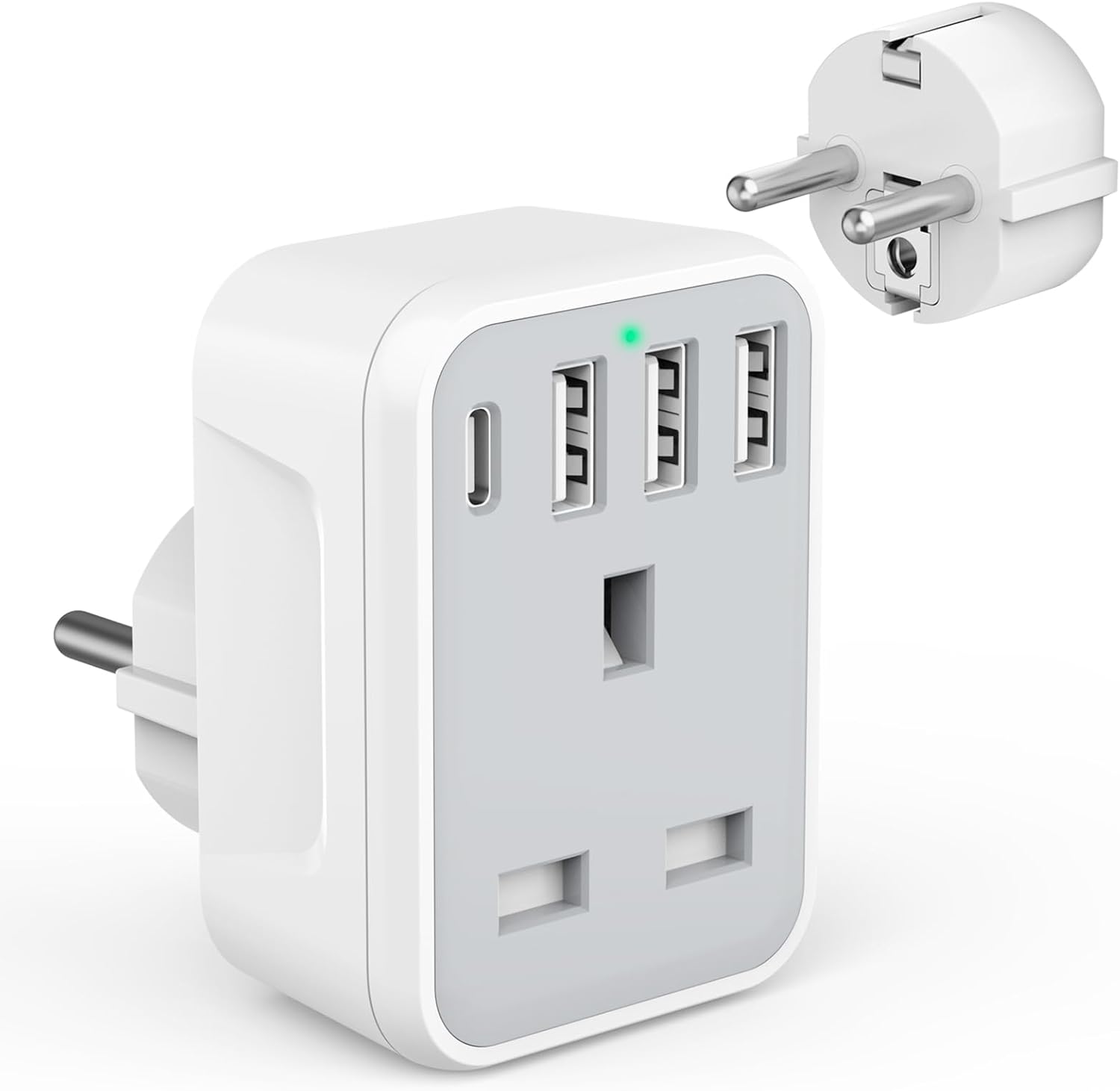I arrived at my Barcelona hotel at midnight, exhausted from the journey, only to discover my phone charger would not fit the wall socket. The hotel reception had adapters for sale at triple the airport price. Since then I travel with at least two adapters for any European trip, and I test them before leaving home. Spain’s plug situation is straightforward once you understand it, but showing up unprepared means paying a premium or hunting for an electronics shop.
Spain uses Type C and Type F plugs with a voltage of 220-240V at 50Hz. If you’re coming from the UK, US, or other countries with different plug types, you’ll need a travel adapter.
Featured Spain Plug Adapter
What Plug Type Does Spain Use?
Spain uses two plug types:
Type C (Europlug):
- Two round pins, 4.8mm diameter
- No grounding pin
- Rated up to 2.5A
- Used for small, low-power devices
Type F (Schuko):
- Two round pins plus grounding clips on the sides
- Rated up to 16A
- Used for higher-power devices
- Compatible with Type C outlets
If your device has a Type C or Type F plug, it will work in Spain without an adapter.
Who Needs an Adapter?
UK visitors: UK plugs (Type G) have three rectangular pins and won’t fit Spanish outlets. You need a UK-to-EU adapter.
US visitors: US plugs (Type A/B) have flat pins. You need a US-to-EU adapter.
Australian visitors: Australian plugs (Type I) have angled flat pins. You need an adapter.
Do I Need a Voltage Converter?
Probably not. Most modern electronics (phones, laptops, cameras, tablets) are dual-voltage, meaning they automatically work with 110-240V. Check the label on your charger – if it says “100-240V” or “110-240V,” you only need a plug adapter.
You might need a converter if:
- You’re bringing older electronics
- You’re bringing US hair dryers, curling irons, or other heating appliances that say “120V only”
Dual-voltage hair dryers exist and are better for travel than bringing a converter.
Choosing an Adapter
Basic adapter: Simple, cheap, converts the plug shape only. Around £3-5.
Adapter with USB: Converts the plug plus adds USB ports for charging phones and tablets. Around £10-15. More versatile.
Universal adapter: Works in multiple countries (EU, UK, US, Australia). Good for frequent travellers. Around £15-25.
What to Look For
- Grounded option: If your devices have a ground pin, get an adapter that supports it
- USB ports: Convenient for charging multiple devices
- Compact size: Some EU sockets are recessed; bulky adapters may not fit
- Surge protection: Optional but useful for protecting electronics
Popular Adapters
- Basic UK to EU: £3-5, simple two-pin adapter
- JARVANIA Travel Adapter Bundle: Includes multiple plug types plus USB ports
- Skross World Adapter: Premium universal option for frequent travellers
Practical Tips
- Pack a spare: Adapters are cheap and easy to lose
- Airport shops: You can buy adapters at UK and Spanish airports, but they’re more expensive
- Power strips: Bring a UK power strip and one adapter to charge multiple devices from a single Spanish outlet
- Hotels: Many hotels have USB ports or universal outlets near the bed, but don’t count on it
Related Guides
Frequently Asked Questions
What plug type does Spain use?
Spain uses Type C (Europlug) and Type F (Schuko) plugs with two round pins. Type F includes grounding clips on the sides for higher-power devices.
Do I need a travel adapter for Spain if I’m from the UK?
Yes, UK plugs (Type G with three rectangular pins) won’t fit Spanish outlets. You need a UK-to-EU adapter to use your devices in Spain.
Do US travelers need a voltage converter for Spain?
Most modern electronics like phone chargers, laptops, and cameras are dual-voltage (100-240V) and only need a plug adapter. Check your device label – if it says “120V only,” you’ll need a voltage converter.
What voltage does Spain use?
Spain uses 220-240V at 50Hz, which is the same as the UK. Most modern devices support 100-240V and will work fine with just a plug adapter.
Where can I buy a Spain plug adapter?
You can buy adapters at UK and Spanish airports, Amazon, electronics stores, or travel shops. Airport adapters are more expensive, so it’s best to buy one before your trip.
Can I use my hair dryer in Spain?
Check the label on your hair dryer. If it’s dual-voltage (100-240V), you only need an adapter. If it says “120V only,” you’ll need a voltage converter or should buy a dual-voltage travel hair dryer.

